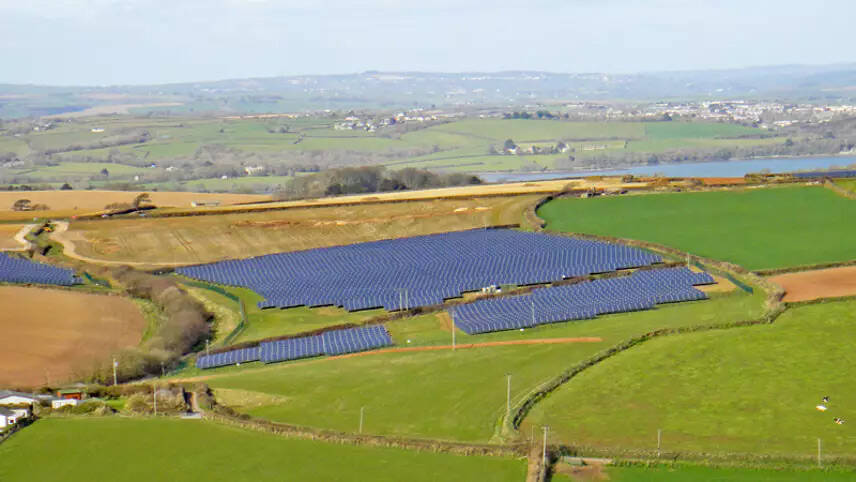Register for free and continue reading
Join our growing army of changemakers and get unlimited access to our premium content

Pictured: Mendennick solar farm, Cornwall
That is according to the Energy and Climate Intelligence Unit (ECIU), which is cautioning policymakers around the addition of new restrictions on larger solar arrays through the Energy Bill that is currently passing through the House of Lords.
An addition tabled to the Bill states that the development of large-scale solar plants on agricultural land should be “ended” and that, instead, the UK should only develop solar on rooftops and brownfield sites.
Both Liz Truss and Rishi Sunak, in their bids for Conservative Party leadership last year, stated pledges to restrict solar on farmland and repeatedly used rhetoric juxtaposing solar with food security and farmer livelihoods. Sunak’s Government had shelved these proposals and has set up a new solar industry task-force to plot the delivery of 70GW of solar by 2035. But some backbench Tory MPs have continued to push back against solar.
The ECIU is urging Ministers to consider how a significant solar clampdown could not only undermine the delivery of the UK’s climate and energy targets, but add money to energy bills, as customers will be reliant on more expensive gas than cheaper clean energy.
The organisation has estimated that, if the proposals to block solar developments go ahead, the UK’s collective domestic energy bills will be £3bn to £5bn higher than without the changes. The £5bn figure is equivalent to around £180 per year, per home.
The changes proposed for the Energy Bill would see solar development banned on England’s ‘Best and Most Versatile’ (BMV) agricultural land. Land is classified in grades and BMV land is a category covering grades 1 to 3a.
Most solar developments within the past decade have been on 3b land, not currently classed as BMV. Solar development is already banned on grades 1 and 2. Solar arrays currently cover just 0.1% of the UK’s farmland and, if all projects in the pipeline went ahead, this share would be 0.4%, according to Solar UK.
The ECIU estimates that delivering the UK’s 2035 target could be done with 0.5% of UK farmland. Ground-mounted arrays would account for 23GW to 38GW of UK capacity, with the rest accounted for by rooftop and floating solar.
The ECIU’s lead analyst Tom Lancaster said: “There has never been a cheaper form of energy than solar, and putting even more barriers in place to its roll out will cost the public dear, whilst locking in dependence on imported gas. This makes little sense when new solar farms will only need a tiny fraction of the available farmland, presenting no real risk to food security whilst providing a major boost to Britain’s energy security.
“With farmers seeking to diversify revenue streams in face of volatile prices and increasingly extreme weather, red tape to halt solar farms would be anti-growth for the rural economy.”


Please login or Register to leave a comment.